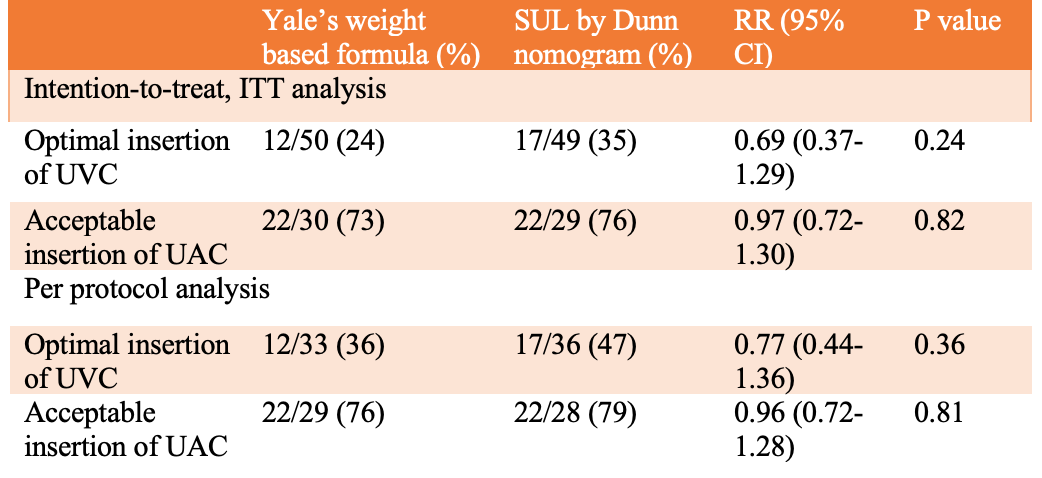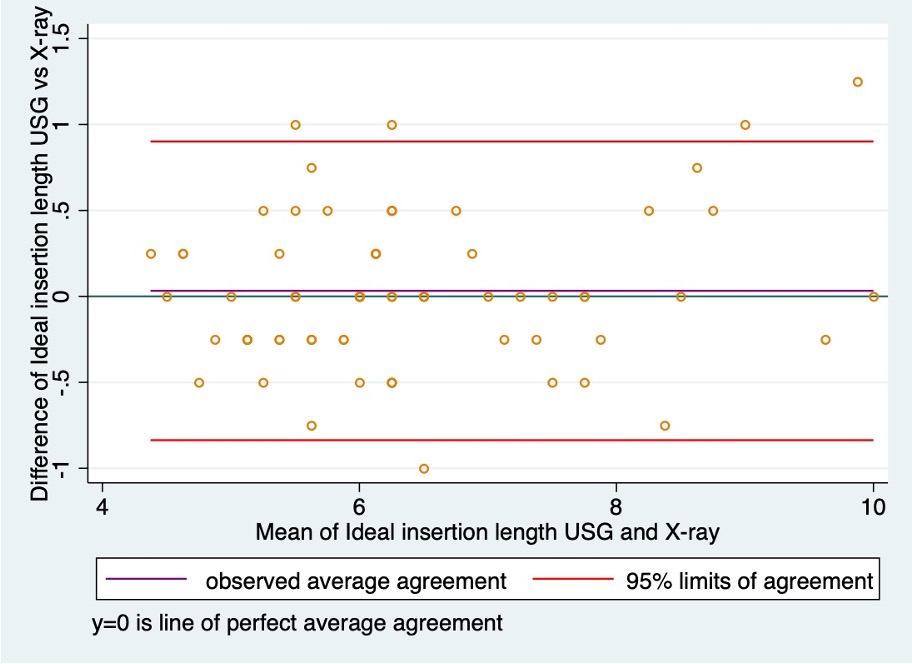Neonatology
Session: Neonatal-Perinatal Health Care Delivery: Practices and Procedures 1
440 - Comparison of Two Methods of Estimation of Length of Umbilical Arterial and Venous Catheter Insertion in Neonates: A Randomized Trial
Monday, May 6, 2024
9:30 AM - 11:30 AM ET
Poster Number: 440
Publication Number: 440.3164
Publication Number: 440.3164

Umang Bhardwaj, MD, DM (he/him/his)
Senior Resident
AIIMS, New Delhi
New Delhi, Delhi, India
Presenting Author(s)
Background: Despite years of use of umbilical venous catheters (UVCs) and umbilical arterial catheters (UACs), the methods for estimating their insertion length remain suboptimal.
Objective: The primary objective was to compare the effect of the insertion length calculated by a novel weight-based formula from Yale University and that estimated by Dunn nomograms on shoulder-umbilical length (SUL) on the proportion of neonates with optimal tip positioning of UVC and UAC. Secondary objectives were to compare the difference between the optimal length of UVC estimated from X-ray with that by ultrasound and to examine the association between anthropometric parameters and the optimal insertion length.
Design/Methods: Neonates requiring UVC and/or UAC insertion (n=102) were randomized to insertion length estimated by the weight-based formula or SUL method. The optimal UVC tip position (± 0.5cm of inferior vena cava–right atrium junction) was determined using POCUS. The acceptable UAC tip position (between T6 and T9 vertebrae) was determined using X-rays. Seven anthropometric parameters were recorded and evaluated for their association with the ideal insertion length.
Results: Of 102 enrolled neonates, there were 100 UVC and 60 UAC insertions, there was no difference in the proportion of neonates with optimal UVC tip position between the weight-based formula and the SUL groups (12/50 vs. 17/49; relative risk [RR]: 0.69; 95% CI 0.37 to 1.29). The UVC was malpositioned in the liver in 17 and 13 neonates in the two groups, respectively. There was no difference in proportion with optimal tip position between the two groups even after excluding these 30 neonates (RR: 0.77; 95% CI 0.44 to 1.36). The mean difference between the optimal length estimated from ultrasound and X-ray was 0.03 cm(limits of agreement: -0.8 cm to +0.9 cm). There was no difference in the proportion with acceptable UAC tip position between the weight-based formula and SUL groups (22/30 vs. 22/29; RR 0.97; 95% CI 0.72 to 1.30). Regression analyses did not identify any anthropometric parameter(s) that improved the rates of optimal tip positioning.
Conclusion(s): The novel weight-based formula for estimating the insertion length did not improve the optimal/acceptable positioning of UVC or UAC. There was a poor agreement between the optimal insertion length of UVC estimated from X-ray and by USG. Ultrasound-guided insertion should be evaluated in future studies to decrease the UVC tip malposition rates.
www.ctri.nic.in, CTRI/2022/01/039136
Keywords: Umbilical venous catheter, Umbilical arterial catheter, Insertion length, Point of care ultrasound

.png)

